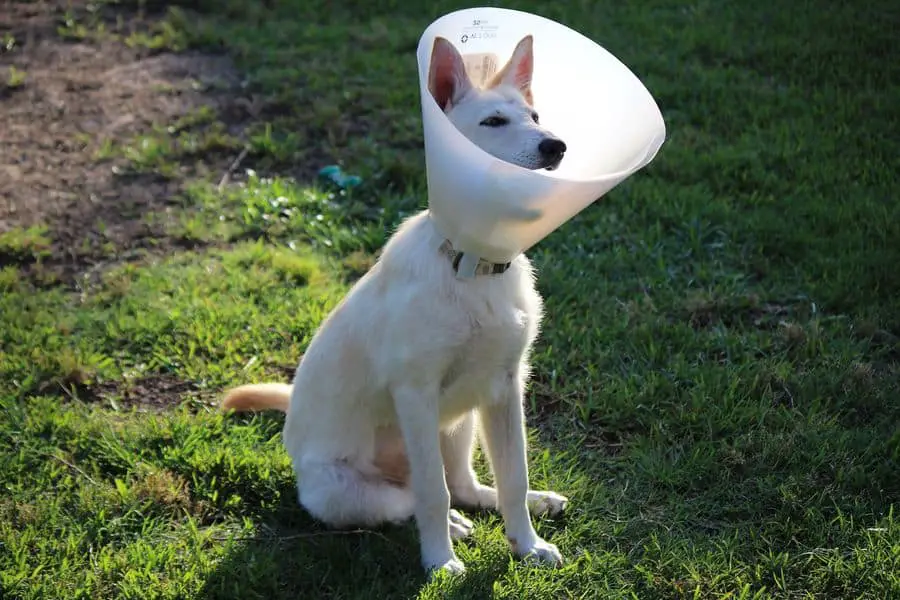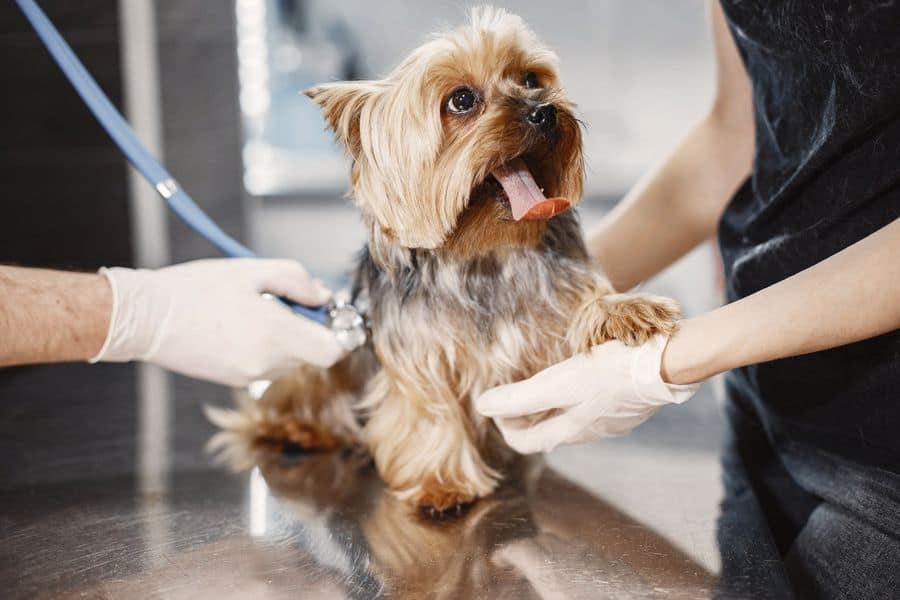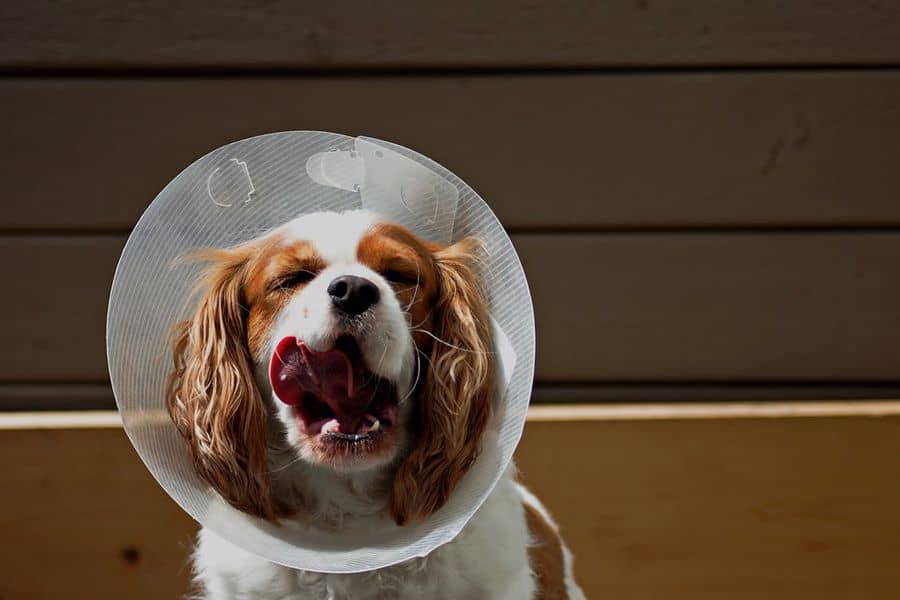If your dog recently had an injury or condition that required surgery, then chances are that you got them a dog cone to aid faster recovery and healing without any complications. The cone clearly isn’t a prime option for your pet and you would likely be gunning to remove it as soon as you can. So, how long to use dog cone after surgery?
Contents
How Long to Use Dog Cone After Surgery?
The time frame to use a dog cone after surgery usually ranges from 1 to 2 weeks for regular surgery and 6 to 12 weeks for orthopedic surgery. A dog cone is to be kept until the wound site is fully healed and the sutures are completely removed.
Asides from the type of surgery, the age of the animal and the suture material also affect the duration of a dog cone use. Even if you are convinced that your dog is healed and ready to take off the cone, it is important to wait until the next appointment with a vet before taking any action.
Why Should You Use a Dog Cone Until Full Recovery?
One of the mistakes many dog owners make is that they remove the dog cone too early before the full recovery of their pet. As a result, when left alone your fur baby has unchecked access to the incision site, and may end up reopening the wound, or worse, getting it infected.
At our clinic, I advise pet owners to use the dog cone after every surgical procedure, and here’s why:
Facilitates Healing
A dog cone acts as a barrier that prevents your pet from tampering with wounds or surgical incisions. By stopping them from scratching or tearing at the incision site, dog cones ensure that the wound is not reopened, and thus, heals at an undisturbed pace.
Prevents Infection
Dogs are normally inclined to lick or play with their injuries, and since they are not exactly hygiene-conscious, they could unknowingly introduce harmful bacteria to the injury. These bacteria could put your dog in more misery by causing inflammation and pain. With a dog cone, however, this could be prevented and your pet is kept safe from harm.
Reduces Costs and Expenses
By speeding up the healing process and preventing infections, dog cones could help to reduce the money you have to spend on treating a complication to the injury. You would also be saving time expended on driving to multiple appointments, so, cones help a great deal.
How Should You Care For Your Pet on a Dog Cone?
It goes without saying that using a dog cone for your dog might result in some discomfort. I agree that they might find regular activities like eating or playing a little difficult, but this would mostly be because of the injury and not the cone.
Here are some tips I recommend to help you care for your pet and make them as comfortable using a dog cone as possible:
Observe Patiently
It takes about 2 to 3 days for your pet to adjust to a dog cone, and in that timeframe, they could get really grumpy, moody, and in some cases, outrightly annoying. In helping both of you get through this period, you are going to need a whole lot of patience.
You need to show your pet that you understand how they feel, you sympathize with them and you are willing to do anything to ease their discomfort. This will give some reassurance, reduce their misery and ultimately, help them to adjust to wearing the cone faster.
Reward
Pets respond positively to rewards and treats, both with and without a cone. As a result of the discomfort they feel, your pet is very likely to misbehave. However, when they do behave properly, you should reward them in a way that they recognize.
Not only does this help your dog get better quickly, but it also maintains the ‘reward for good behavior’ strategy that you must have enforced at some point during training.
Help Them Move Around
As a result of the structure of a dog cone, your pet’s range of vision and sense of balance is reduced, thus making it less easy to move around. They could bump into furniture and walls, which could potentially cause further injury. Therefore, you need to help them learn how to walk with the cone.
You could do this by taking your pet on short walks inside the house, teaching them how to maneuver between spaces, and taking items that could trip them out of the way.
Related Questions
Can a Dog Sleep With a Dog Cone?
Yes, a dog can sleep with a dog cone on. If you take off the dog cone while your dog sleeps, they could accidentally strain or scratch the injury while sleeping, thus, defeating the entire purpose of the dog cone.
Are There Alternatives to Dog Cones?
Yes, there are alternatives to dog cones. In the event that a pet does not cope adequately with a traditional dog cone, here are other clinically accepted alternatives you could choose from:
- Neck collars are usually softer and padded alternatives to dog cones
- Inflatable collars are just like travel pillows, except that they come with loops. They are great because they are adjustable, and allow your pet to eat, drink and move without too much difficulty
- Surgical recovery clothing works by covering the wound directly, rather than restricting the pet’s movement
How Long Should a Dog Wear a Cone After Neutering?
I advise keeping the dog cone on until the incision site is fully healed and all the stitches removed. This usually takes about 10-14 days after the neutering/spaying surgery.
Conclusion
Dog cones are very important to a pet’s recovery and should be worn all the time. To avoid further complications, visit our clinic to get your pet’s injury checked by an expert. I’ll conduct tests to determine whether it is safe to remove the dog cone, as well as provide further guidelines to prevent injury recurrence or manage any long-term medical conditions.



